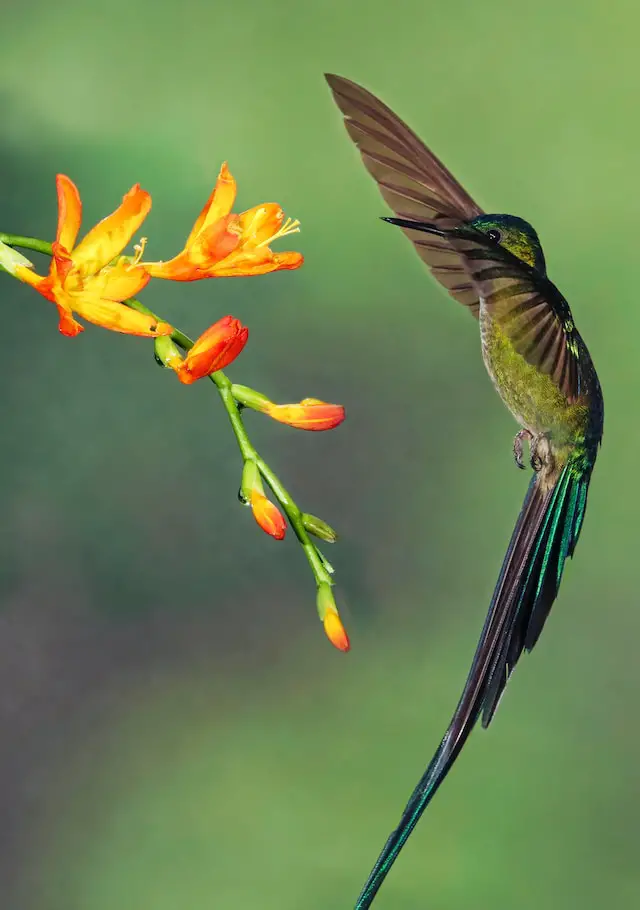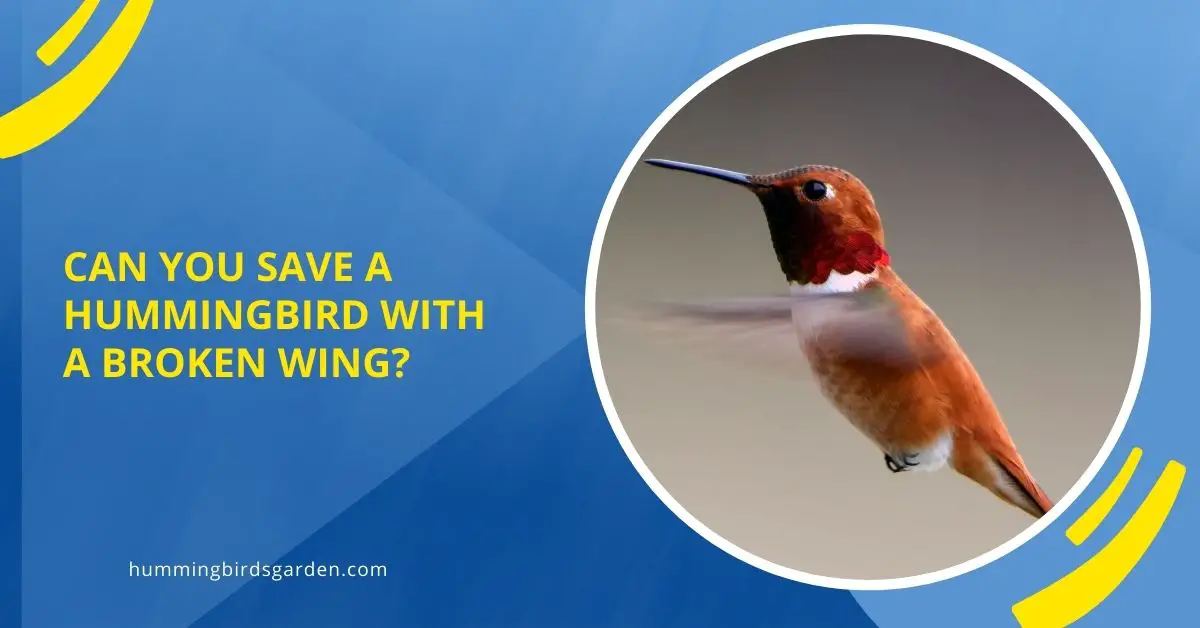Hummingbirds are fascinating creatures, known for their incredible agility and stunning colors. Unfortunately, they can sometimes suffer from accidents, such as breaking a wing. Can you save a hummingbird with a broken wing?
The short answer is yes, but it requires the proper knowledge, patience, and care.
In this article, we’ll discuss how to identify a broken wing, steps to take in rescuing and treating the hummingbird, and the importance of rehabilitation before releasing it back into the wild.
Identifying a Broken Wing
How to spot a hummingbird in distress?
- Look for signs of struggle, such as difficulty flying or remaining grounded
- Examine the bird for physical deformities, like a drooping or twisted wing
- Observe their behavior, as injured hummingbirds may appear lethargic or disoriented
Examining the wing without causing harm
- Approach the bird calmly and slowly to avoid causing further stress
- Use a soft cloth or towel to gently hold the bird and protect your hands from their sharp beak
- Inspect the wing for any obvious breaks, fractures, or swelling
Rescuing the Injured Hummingbird
Preparing a temporary shelter
- Use a small box or container with ventilation holes and a soft lining, such as tissue or cloth
- Place a heating pad or warm water bottle beneath the container to maintain a comfortable temperature
- Keep the bird in a quiet, low-stress environment away from pets or loud noises
Providing food and hydration
- Offer a sugar-water solution (1 part white sugar to 4 parts water) in a shallow dish or spoon
- Avoid using honey, red dye, or artificial sweeteners, as they can be harmful to hummingbirds
- Monitor the bird’s intake and replace the solution as needed to maintain freshness

Seeking Professional Help
When to consult a wildlife rehabilitator
- If you’re unsure how to handle the injury or the bird’s condition worsens
- When the bird requires long-term care or specialized treatment
- To ensure proper recovery and rehabilitation before releasing the hummingbird back into the wild
Finding a local wildlife rehabilitator
- Search online directories, such as the National Wildlife Rehabilitators Association or Wildlife International
- Contact your local animal control or wildlife agency for referrals
- Reach out to veterinarians or nature centers for recommendations
Caring for the Broken Wing
Setting the wing
- Enlist the help of a trained professional or follow their guidance in setting the wing
- Use a splint or bandage to immobilize the wing and promote healing
- Monitor the bird closely for any signs of infection, pain, or distress
Administering medication
- Consult a wildlife rehabilitator or veterinarian for guidance on appropriate medications
- Use caution when administering medication to avoid causing additional harm
- Follow the recommended dosage and treatment duration to ensure optimal healing
Rehabilitation and Release
Physical therapy and exercise
- Work with a wildlife rehabilitator to develop a suitable rehabilitation plan
- Engage the hummingbird in gentle exercises to restore strength and mobility
- Gradually increase the intensity and duration of the exercises as the wing heals
Preparing for release
- Monitor the bird’s progress and consult with a professional to determine when it’s ready for release
- Choose a suitable release site, such as a familiar or protected habitat with ample food sources
- Acclimate the bird to the environment and ensure it’s capable of flying and feeding independently
Conclusion
In conclusion, saving a hummingbird with a broken wing is possible, but it requires a careful and informed approach. By properly identifying the injury, providing appropriate care, and consulting with wildlife rehabilitators, you can help ensure the bird’s successful recovery and eventual return to the wild.
It’s essential to prioritize the hummingbird’s well-being throughout the process and remember that collaboration with professionals is key to a successful outcome.
FAQ
Q: Can a hummingbird survive with a broken wing?
A: Yes, with proper care and treatment, a hummingbird can recover from a broken wing and eventually return to the wild. However, the recovery process can be lengthy and requires patience, as well as assistance from wildlife professionals.
Q: How long does it take for a hummingbird’s wing to heal?
A: The healing time for a hummingbird’s broken wing can vary depending on the severity of the injury and the bird’s overall health. Generally, it can take anywhere from a few weeks to several months for a full recovery.
Q: Can I care for an injured hummingbird at home?
A: While it’s possible to provide temporary care for an injured hummingbird, it’s crucial to consult with a wildlife rehabilitator or veterinarian for guidance. They can provide specific instructions for the bird’s care and help ensure a successful recovery.
Q: How can I prevent injuries to hummingbirds in my yard?
A: To prevent injuries to hummingbirds, maintain a safe and healthy environment by keeping feeders clean, placing them away from windows, and removing potential hazards such as loose wires or sharp objects. Additionally, consider planting native flowers to provide natural food sources and shelter.
Q: What should I do if I find a hummingbird with a broken wing in the wild?
A: If you find a hummingbird with a broken wing in the wild, gently capture the bird using a soft cloth, provide a temporary shelter, and offer food and hydration. Seek professional help from a wildlife rehabilitator or veterinarian as soon as possible to ensure proper treatment and care.

















